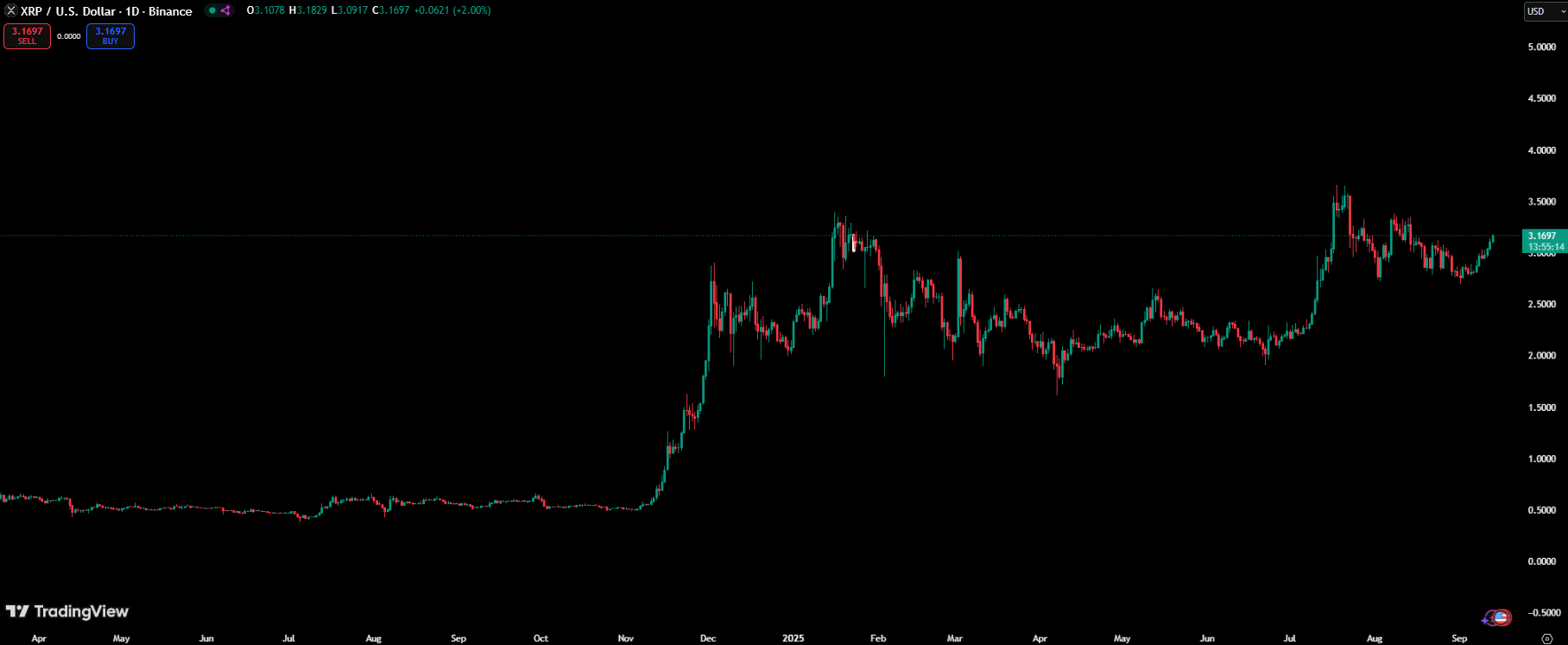
The resolution left the 2023 district court ruling intact, confirming that XRP sales on public exchanges are not securities. This outcome removed a major cloud that had long kept institutional players cautious, giving XRP far greater clarity in the United States than at any time since its launch.
The question now is how XRP can leverage this fresh legal environment to evolve beyond speculation. Over the next half-decade, its value will depend on whether it can build real utility in global finance, scale liquidity, and compete against stablecoins and CBDCs. With the lawsuit behind it, investors and institutions alike are looking ahead to what XRP could become by 2030.
XRP is the native asset of the XRP Ledger, a blockchain designed for ultra-fast and inexpensive settlement. Transactions typically finalize within seconds, with fees measured in fractions of a cent. Over the years, Ripple has worked to push its adoption in cross-border payments, building Ripple Payments (formerly RippleNet), which now spans more than 90 markets and 55 currencies. Financial institutions can choose to settle in fiat, stablecoins, or XRP itself depending on cost and efficiency, and in certain corridors, XRP provides the best option.
A major technical upgrade in 2024 also gave the XRP Ledger new depth. The addition of a native automated market maker (AMM) allowed users to swap assets on-chain and liquidity providers to earn yield, without relying on centralized intermediaries. This improvement is already helping to strengthen liquidity conditions, a crucial factor for institutional adoption.
Currently, XRP trades near $3.20 with a market capitalization around $176 billion, putting it firmly among the top three cryptocurrencies by size. Its trading volumes consistently exceed billions of dollars per day, reflecting broad exchange coverage and an active market. While its price remains below the all-time highs recorded during the 2017–2018 bull run, the post-litigation rally has brought XRP closer to its strongest levels in years.

The real opportunity for XRP lies in its ability to carve out a meaningful role in international money flows. In 2024, global remittances to low- and middle-income countries reached $685 billion, with fees averaging around six percent. That’s double the United Nations’ target of three percent, meaning billions of dollars are lost annually to inefficiencies. XRP’s design makes it particularly useful for bridging illiquid currency pairs and removing the need for banks to pre-fund nostro accounts, freeing up capital while reducing costs for end users.
If regulators and payment providers across key regions adopt XRP in remittance corridors, the token could capture a significant share of this market. The challenge is that stablecoins and CBDCs are also vying for the same role, and traditional systems like SWIFT are evolving to compete on cost and speed. For XRP to win, it must prove that its combination of liquidity, compliance readiness, and transaction efficiency offers unique advantages.
The removal of legal uncertainty is the foundation of every optimistic scenario. With that barrier gone, institutional players have fewer excuses to avoid XRP. Ripple’s global network of payment partners provides a clear entry point for adoption, and its newly launched RLUSD stablecoin gives institutions a familiar on-ramp. Clients may start with the stablecoin and gradually shift some flows through XRP when it provides better economics.
The growth of liquidity through XRPL’s AMM is another bullish factor, as deeper markets make large transactions cheaper and smoother. If ETFs gain approval in the United States, as some issuers are pushing for, a new wave of passive capital could also drive sustained demand. In such a scenario, XRP could reasonably rise into the $12–20 range by 2030. If adoption accelerates beyond expectations – for example, if XRP becomes central in high-cost corridors across Asia, Africa, and Latin America – prices between $50 and $80 are not out of reach. Under extremely favorable conditions, where XRP captures a sizable share of remittance flows and tokenized assets, the token might even climb toward the $100 mark.
The downside case cannot be ignored. Stablecoins already dominate much of the crypto payment ecosystem, offering a less volatile and often more familiar option for businesses and consumers. Ripple’s own RLUSD could, ironically, compete directly with XRP in some corridors. On the public sector side, central banks are moving quickly with CBDC pilots, many of which aim to reduce settlement costs in cross-border payments. If these alternatives become the preferred rails, XRP’s utility could be limited.
Execution risks are another concern. XRPL’s AMM upgrade in 2024 suffered early technical glitches, raising questions about whether the network can reliably scale as global infrastructure. If institutional users encounter reliability or compliance issues, adoption could stall. In that case, XRP might struggle to move much higher than today’s levels, with prices ranging between $1 and $5 by 2030.
XRP is standing at a crossroads. With its regulatory baggage behind it, the token finally has the breathing room to prove its worth as more than a speculative asset. Its next chapter will depend on how effectively Ripple and the XRP Ledger can turn technical advantages into real adoption across financial corridors that desperately need cost savings.
If XRP succeeds, the coming years could see the token become a fixture of the global payments landscape, driving prices well beyond current levels. But if competitors capture the same space first, XRP risks remaining just another heavily traded digital asset with unrealized potential. The outcome will define not just its price, but whether XRP becomes a cornerstone of blockchain-based finance or remains a missed opportunity.
The information provided in this article is for educational purposes only and does not constitute financial, investment, or trading advice. Coindoo.com does not endorse or recommend any specific investment strategy or cryptocurrency. Always conduct your own research and consult with a licensed financial advisor before making any investment decisions.
The post Major XRP Price Prediction: What the Next Five Years Could Hold appeared first on Coindoo.
Also read: Downloads of Jack Dorsey’s Bitchat Skyrocket in Nepal Amid Social Unrest